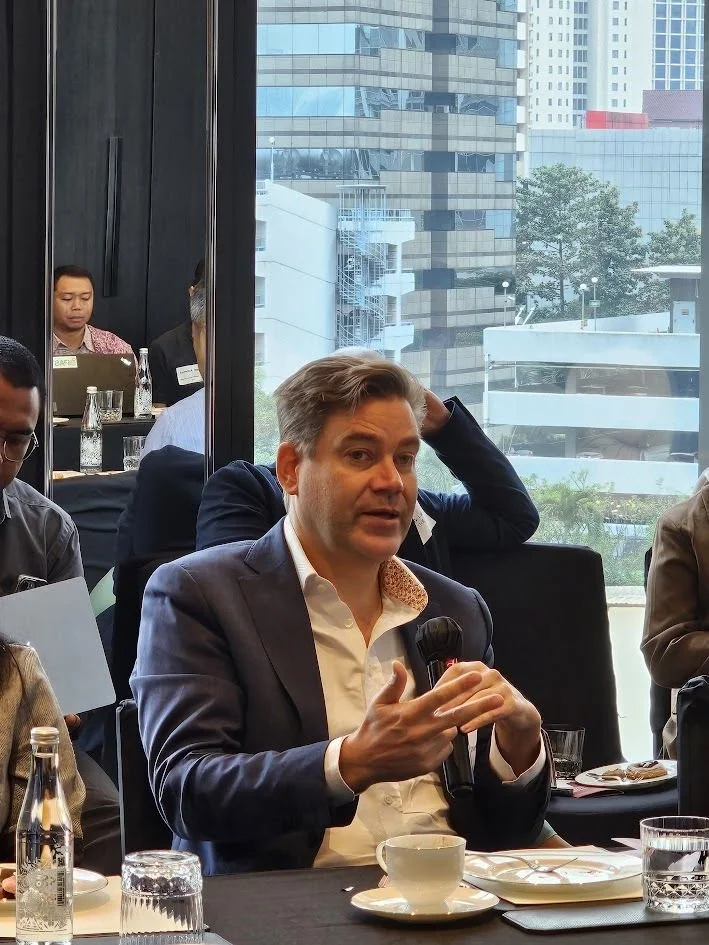From Ambition to Implementation: Realising AI’s Value in Indonesia
Across industries, organisations are rethinking their structures to unlock future value from AI. In Indonesia, the ambition is clear: more than 80% of enterprises plan to make moderate to significant AI investments over the next three years to remain competitive. But ambition alone does not deliver transformation.
As companies experiment with AI, many are discovering a critical barrier: the need to lay down the foundation that ensures those wins aren’t just one-off spikes on a dashboard, but part of a repeatable, scalable system. A system that endures and agile enough to evolve with tomorrow’s algorithms, adaptable enough for technologies we haven’t yet named. Without it, AI initiatives will often fall short of expectations or face prolonged delays.
AIBP, supported by Nutanix, brought together Indonesian enterprise leaders to explore a relevant question: how can organisations move from isolated AI pilots to integrated, institution-wide capability?
Where Silos begin and where the Challenge starts
Legacy systems, often decades old, speak in dialects no longer widely understood. According to our annual AIBP ASEAN Enterprise Innovation Survey, 40.2% of enterprises identify legacy IT infrastructure and systems as a major obstacle to digital transformation. Departments operate with their own workflows, platforms, and data standards, making cross-functional collaboration less a technical exercise than a political negotiation.
“Data that is not accessible, it can’t be addressed by any department, or only by very selective departments creates a limitation for AI implementation.” Iswadi Achmad, Operational Excellence Mining Business from Indo Tambangraya Megah shared.
As with many financial institutions, the friction between business units, IT teams, and product managers isn’t unique, it’s the reality. Each group operates with its own set of incentives, its own definition of success. These data silos slow decision-making, muddy governance, and perhaps most critically, strangle innovation before it takes root.
“You need the right idea of where you're working. The change of technology needs to go hand in hand with the data you need in the future.” said Dirk Wiesmann, Business Head – Growth & Emerging Markets, Nutanix APJ.
Industry leaders agree: no single department can afford to operate in a vacuum. One bank, recognising that digital transformation cannot be left to technologists alone, built an internal programme not to teach business managers how to code, but to immerse them in the full lifecycle of AI, from use case design to model deployment. The aim was not technical fluency, but mutual understanding.
Conversations shifted from persuasion to co-creation. Business leaders began surfacing novel use cases, some of which the data science team had not considered.
From Shop Floor to Smart Factory: Training by Design, Not by chance
The path to integration is clear and increasingly urgent, yet many organizations find themselves out of sync: pressing forward with lofty ambition, yet constrained by aging infrastructure and a workforce unprepared for what transformation demands.
In the industrial realm, the transformation imperative is no less urgent, but the gap between aspiration and reality is often wider. Manufacturers, among the country’s most prominent, report a common disconnect: while IT departments may speak of data architecture and cloud migration, operational technology (OT) teams, those closest to the machines, are rarely looped in the conversations.
“It's actually easier for people who already understand the process to start learning about AI and machine learning but they still need a place to learn. So there's a very big opportunity here." shared Kemal Hadid Susena, Director of Manufacturing and Industry 4.0, Mattel Indonesia.
Some organisations are addressing this divide not through grand strategies, but through deliberate talent bets. One financial services firm, for instance, partnered with their HR and a technology vendor to identify and train 20–30 recent graduates in targeted AI competencies. What started as a small proof-of-concept quickly scaled into something far more ambitious: solutions spanning to other business units.
In the end, the real achievement wasn’t just the deployment of new tech. It was the orchestration of unlikely partnerships across business, HR, and engineering. In the delicate interplay between people and machines, it turns out, intention still sets the rhythm of meaningful transformation.
At the Edge of Compliance: Where Risk, Regulation, and Reality Collide
For upstream operations, digital transformation is about working within tight regulatory lines, protecting sensitive seismic and field data, and staying compliant with strict data residency laws that restrict cloud usage. Here, compliance isn’t red tape, it’s frontline risk management.
This is where AI hits friction. Models might predict well, but if the insights don’t clearly tie to revenue, safety, or risk reduction, buy-in stalls. In one case, an AI tool proved valuable to legal teams reviewing thousands of pages of regulation. When applied to seismic forecasting, however, leadership demanded harder proof of value.
Edge AI offers a promising path especially in harsh environments where connectivity is unreliable. Analog cameras still line many sites, offering limited visibility. Converting those streams into actionable insight especially when bandwidth is scarce and the environment is harsh requires edge computing. The intelligence must happen locally, without waiting on a signal from a distant data center.
“By having your data consolidated in one platform, that’s actually the easiest way to move forward to also mitigate your data, whether it has to be on the cloud or on-prem.” Leonny Kosasih, Country General Manager, Dell Indonesia shared.
And while these challenges are sharpest in energy, they’re echoed in banking too. Financial institutions, where data is everything, were among the first to shift from legacy to scalable, secure platforms built for AI. Now, with newer models like LLMs, banks are exploring how to safely embed internal data to build secure, context-aware AI systems. Whether it’s through controlled environments, improved pipelines, or rigorous user testing, the goal remains the same: if the output meets expectations, even if not perfect, it’s a green light for launch.
In the end, the real AI advantage is about the system around them; compliance, infrastructure, and a future-ready culture to make it real.
Building AI Foundations That Last
Ambition is in abundance, evident in the rising budgets and experimental pilots across industries. But AI is not a plug-and-play solution. We need to build the scaffolding around it, the human, technical, and regulatory architecture that can stretch as the field accelerates. It requires bridging legacy and modern infrastructure, aligning incentives across departments, and investing in people as much as platforms.
For organisations starting out or exploring AI, Integrated platforms can offer a practical approach to scale from small experiments towards broader long-term use. This foundation will position organisations for sustained success throughout their AI journey.




